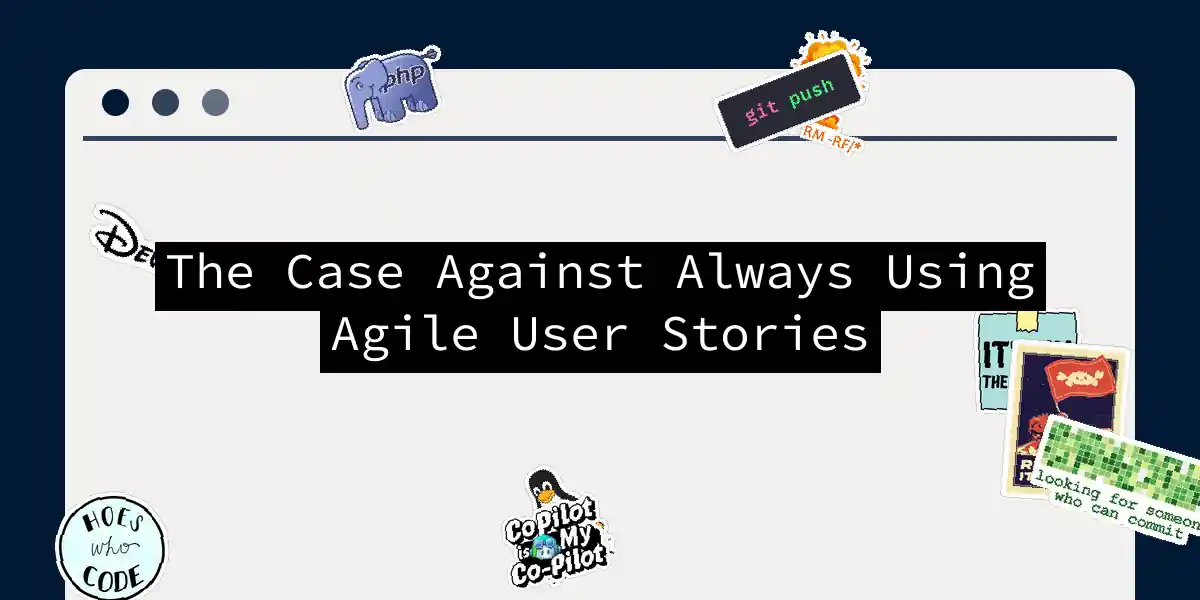Look, I’m going to say something that might get me uninvited from the next Agile conference: user stories aren’t always the answer. There, I said it. Before you close this tab and write an angry comment about how I “don’t understand Agile,” hear me out. I’ve spent years watching teams religiously convert every single requirement into the sacred “As a… I want… So that…” format, even when it made absolutely no sense to do so. The problem isn’t user stories themselves. They’re a perfectly fine tool. The problem is treating them like the One Ring to rule all requirements. And unlike Tolkien’s ring, this one doesn’t even make you invisible at standup meetings when you haven’t finished your tasks.
The Uncomfortable Truth About User Story Dogma
We’ve created a cult around user stories. I’ve sat in meetings where smart engineers contorted themselves into linguistic pretzels trying to fit a database migration into user story format. “As a database, I want to normalize my schema so that I can… exist properly?” No. Just no. The typical user story follows the Connextra template, which looks elegant on paper. But here’s what actually happens in practice: you end up with a backlog full of stories that read like Mad Libs written by someone who’s never actually used the software. Half of them are missing crucial technical details because “we’ll discuss it during refinement,” which becomes an excuse for perpetual vagueness. Let me show you what I mean with a real example I encountered:
# User Story #437
As a user
I want the system to be fast
So that I can get my work done quickly
This passed through three refinement sessions before someone finally asked: “What does ‘fast’ mean?” Turns out, we needed sub-second response times for search queries on datasets with millions of records. That’s not a user story problem—that’s a performance requirement that needs actual numbers, technical constraints, and architectural decisions.
When User Stories Become Actively Harmful
Let’s talk about non-functional requirements. These are the unloved stepchildren of Agile—the things that make your software actually work in production but don’t fit neatly into user story format. Security, performance, scalability, maintainability, observability. You know, the boring stuff that determines whether your system will still be running at 3 AM on Black Friday. Try writing a user story for “the
